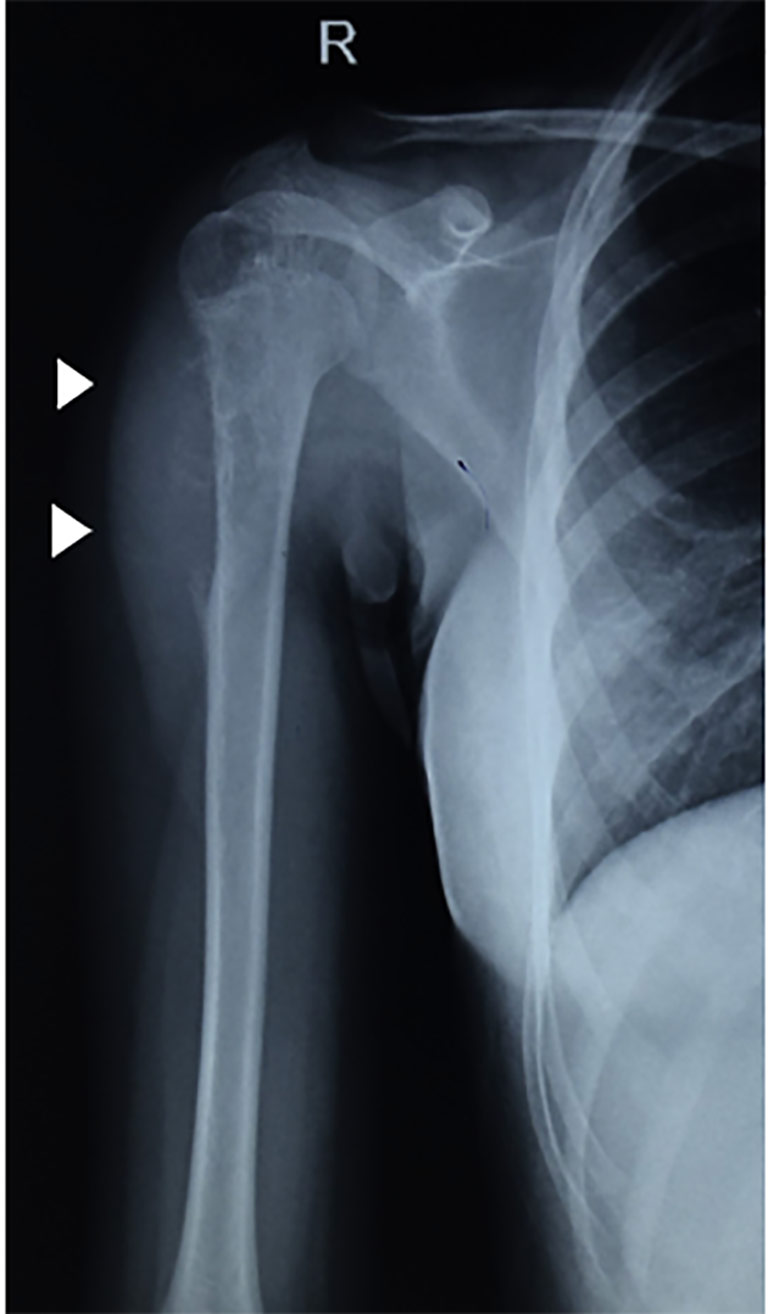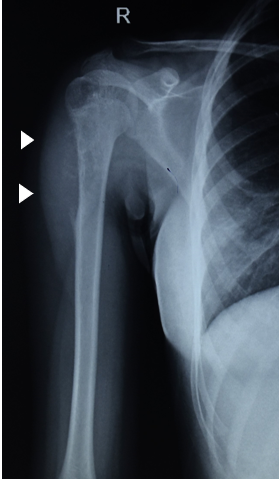What causes Ewing’s Sarcoma?
There are no known environmental or hereditary factors which cause Ewing’s Sarcoma.
What are the symptoms of Ewing’s Sarcoma?
Ewing’s Sarcoma usually presents with pain and swelling around the involved bone. The pain may initially be attributed to any trivial injury while playing or fall from bicycle etc. Pain gradually worsens over time and it may become difficult to walk (if it involves bone of the lower limb). Pain is associated with gradually progressive swelling. There may be associated generalised weakness or lethargy, fever and weight loss. Sometimes, the involved bone becomes so weak over time that it fractures (Pathological Fracture).
Which bones are commonly affected by Ewing’s Sarcoma?
Though Ewing’s Sarcoma can affect any bone, it is more common in flat bone like pelvis and shoulder blade. It is also common around the shoulder and knee.
How is Ewing’s Sarcoma diagnosed?
After proper history and physical examination, patient is subjected to full length X-rays of the involved bone along with Contrast enhanced MRI to know the local extent of the disease. After the local imaging, a biopsy from the involved bone is done to confirm the diagnosis of Ewing’s Sarcoma Since, Ewing’s Sarcoma has potential to spread to other body parts, a whole body PET-CT scan with CT Chest is done to see if the tumour has already spread to any other body part. Alternatively, staging can also be done by bone scan, CT chest and bone marrow biopsy.
What is biopsy? Who should do the biopsy?
In biopsy, some part of tumour tissue is removed and sent for examination under microscope. It can be open biopsy (in which a surgical incision is made to expose the tumorous bone and take out the diseased tissue) or a needle biopsy (in which a thin needle is used to take out the tissue without any incision). Since needle biopsy doesn’t involve any incision, the surgical trauma, pain and morbidity are lesser with needle biopsy.
It is very important that a biopsy should always be done by surgeon experienced with sarcomas who will be doing the definitive surgery since poorly done biopsies not only may yield false negative or inconclusive results but also wrongly placed biopsy scars can be detrimental for future limb salvage (which might unnecessarily cause increase in extent of surgery and hence the complications). In a nutshell, since the location and technical aspects of biopsy can affect the treatment options and final outcome of the patient, biopsy should always be done by Orthopaedic Oncologist or one of his team members.
We at Bone Cancer Clinic, Chandigarh do biopsy with a needle for almost all the cases with a very high diagnostic yield.
How is Ewing’s Sarcoma treated?
Ewing’s sarcoma treatment in India involves a multidisciplinary team approach. Ewing’s Sarcoma treatment comprises of two parts -systemic therapy and local treatment. After proper work up, patient is started on systemic therapy in form of chemotherapy so as to kill the cancer cells. After around 3 months of chemotherapy, patient is subjected to local treatment for involved bone which may be surgery or radiotherapy or both depending on the size of tumour, location of tumour, morbidity associated with surgery and so on. After local treatment, patient is again started on chemotherapy. The total treatment continues for 10-12 months.
What is chemotherapy?
Chemotherapy refers to group of anti-cancer drugs that are used to kill cancer cells. It helps in shrinkage of the tumour and eases the surgery. In Ewing’s Sarcoma, patient is given chemotherapy before local treatment (surgery/ Radiotherapy or both) as well as after it. Patient needs to be admitted in the hospital to receive chemotherapy.
What is Radiation therapy?
Radiation therapy uses high energy beam to kill cancer cell. Radiation therapy may be required instead of surgery at sites where surgery is too risky or associated with too many complications. Occasionally, radiation therapy is given after surgery also in Ewing’s Sarcoma.
In radiotherapy, daily sessions of radiation are given over a period of few weeks. Though radiation therapy avoids the immediate pain and discomfort of surgery, it has it’s own side effects (usually long term) particularly in growing children which include loss of growth potential of bones in growing children, secondary cancers, chronic edema/ swelling in the limbs, joint stiffness, damage to skin and risk of fractures later on.
What kind of surgery is performed in Ewing’s Sarcoma?
Surgery aims at removing the cancerous part of bone. With the advent of newer surgical techniques, it is possible to do a limb salvage surgery in majority of the patients in which only the part of the bone involved with Ewing’sarcoma is removed rather than cutting the whole limb. The defect so created is reconstructed with artificial metal implant thereby saving the limb. In some cases, the cancerous bone so removed is given very high dose of radiation so as to kill all the cancer cells and the sterilised bone so formed is fixed back to the parent bone with the help of plates and screws, a technique commonly called as Extra Corporeal Radiation Therapy (ECRT). In children, since the artificial joint will not grow as the child grows leading to unequal limb lengths over a period of time, the defect can be reconstructed with expandable joint which can be lengthened as the child grows which allows to maintain limb length equality at the time of skeletal maturity.
Occasionally, because of tumour size, location or poor response to chemotherapy, patient is offered amputation (cutting the limb) or rotationplasty.
Do all patients require surgery in Ewing’s Sarcoma?
Though both surgery and radiation therapy are effective in the local treatment of Ewing’s Sarcoma, surgery is usually preferred unless it is associated with significant morbidity or he location is such that it is not possible to remove the tumour in its entirety with good margins.
What is prognosis of Ewing’s Sarcoma?
Prognosis depends on several factors which include size of the tumour, response to chemotherapy, extent of spread to other body parts if any etc. though it varies from patient to patient but generally, 5 year survival rate for patients with Ewing’s Sarcoma without any spread of disease elsewhere with standard treatment is more than 65-70%.
Do alternative therapies work in Ewing’s Sarcoma?
Though number of people claim to cure Ewing’s Sarcoma with alternative therapies but there is no scientific evidence backing those claims. Patients falling for these alternative therapies delay their actual (evidence based) treatment which may be detrimental.
Whom to consult?
First chance is the best chance when it comes to managing Ewing’s Sarcoma or any bone cancer. Patient should consult a trained Orthopaedic Oncologist when diagnosed or suspected to have Ewing’s Sarcoma. Bone Cancer Clinic at Sector 19, Chandigarh is a centre dedicated exclusively for the management of such bone tumours.
Dr Rajat Gupta
Orthopaedic Oncologist
Bone Cancer Clinic
# 5, Sector 19 A, Chandigarh
https://goo.gl/maps/KT5hkxsRVy12
SCO 141 (Backside), Sector 14, Panchkula
https://goo.gl/maps/aLdmMwMqvMumVXe76


